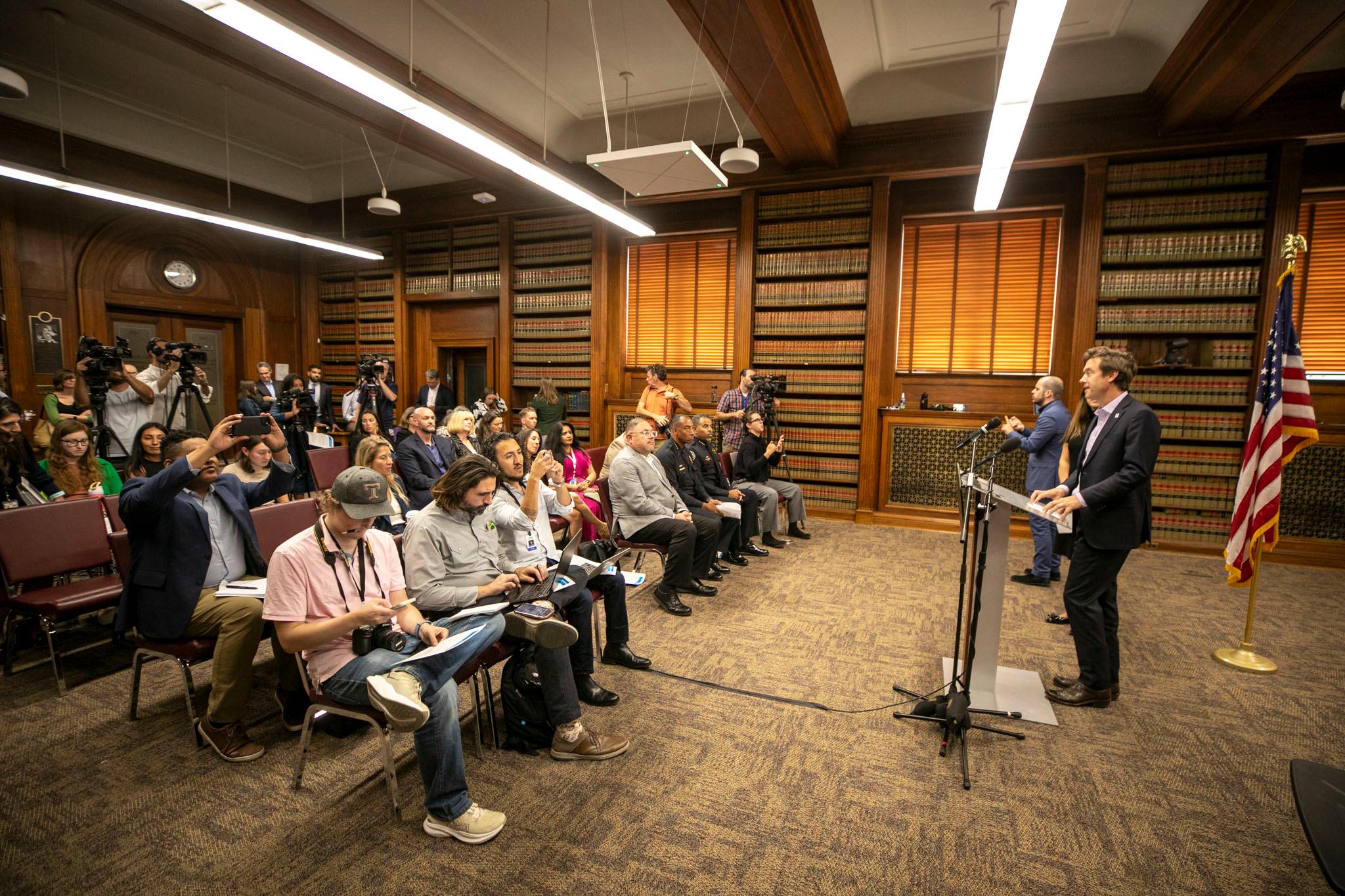On Christmas Eve in 1982, a massive storm dumped around 24 inches of snow on Denver, making the roads nearly impassable. The road clean-up effort after the storm was widely criticized, so much so that many say then-mayor Bill McNichols lost his re-election bid because of it.
Since then there have been a few other massive storms, but the road conditions following last week's 10-inch snowfall seem to have elicited a 1982-level backlash.
"One of the big issues in that campaign was how terrible a job had been done plowing the streets. People took that to heart and the streets got better," said Park Hill resident Richard Frost, who was living in Denver during the 1982 storm. "I was so surprised when this came up and the streets were so poorly taken care of. The streets were slick, they were terrible."
Last week's storm was a baby blizzard compared to some of the storms of the past, but it left many streets snowy, slushy and icy for days. This prompted an outpouring of complaints and questions from concerned Denver residents, some of which were directed our way.
What made the roads so bad this week?
According to the Denver Department of Public Works, this wasn't a normal storm.
"This particular snowstorm was unusual because it was early season and we had a storm that dropped a lot of snow in a short amount of time, followed by very low temperatures," said Pat Kennedy, an engineering manager with Public Works.
While the city's main streets were plowed and treated with a de-icing agent, the side streets did not get the same care. These smaller streets are the responsibility of the city's fleet of residential plows -- pickup trucks with plows on the front. This fleet only scrapes off the top few inches of snow, and when temperatures dipped below zero in the nights following the storm, it created the car ice luges that drivers have navigated for the last week.
After a week of complaints, Public Works deployed residential plows back to the city's side streets to drop de-icer, starting on Monday night and working through Tuesday. A department spokesperson called the move "unprecedented," and Kennedy said they will evaluate how well the de-icing worked on Wednesday. Typically, de-icer is only applied before a snowstorm, and it's unclear how well it will work on top of existing ice.
"It's like you are spraying your frying pan with an oil spray," Kennedy said of de-icer. "We don't take the snow down to the pavement on side streets, so de-icer is of limited benefit during the storm."
Is Denver bad at snow plowing?
As it turns out, it's really hard to compare different cities in terms of snow plowing competency. There are some easy variables like average snowfall and the miles of streets in the city, but it gets more complicated when you consider the type of plows each city has, what type of de-icing agent it uses and whether or not the city has a separate plowing protocol for main streets and side streets.
Breaking it down to the very basics, Denver has about the same number of lane miles per plow as other Front Range cities in Colorado. Denver has fewer plows per lane mile than Minneapolis, but more than Salt Lake City, both of which get comparable amounts of snow to Denver.
But one major difference between Denver and both Minneapolis and Salt Lake City is Denver's separate residential plow program. These plow-equipped pickup trucks shave off only the top few inches of snow on Denver's side streets, which make up about a third of the city's roads. Denver also does not plow alleys or the sides of streets. These small differences add up when you look at the snow removal effort as a whole: Denver's snow removal budget is around $3 million, Minneapolis's is about $13 million.
Can Denver be better?
In 2017, the city increased the number of residential plows that go out during a snow storm. Most side streets will get plowed during a storm, but the goal is not total snow removal, just clearing a path down the middle of the street.
According to Kennedy, residential plows do not plow down to the pavement because it poses risks to manholes and other infrastructure as well as equipment. Changing this would require an investment in more equipment and maintenance. Increasing the amount of de-icing would also cause environmental concerns as the chloride crystals can leech into the water supply and the abrasive material can get ground up and become particulate matter, which is harmful to human lungs.
It's also worth noting that unlike many other cities, Denver does not require residents to move their cars off the street during snow events to allow plows to clear the entire street. Considering the ubiquity of street parking in the city, doing so would require a major overhaul.












